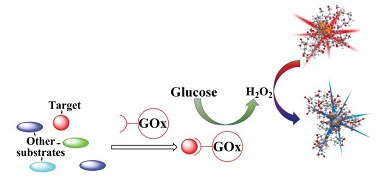Bacterial toxins that undergo unique cell interactions have been used to perform logic functions by researchers in Germany. In a similar way to how we store letters and words on computer disks, these proteins provide a new approach to storing information within whole cells.

The three components of the enterotoxin must bind to the cell membrane in a specific order to activate the logic gate
Synthetic biologists have already modified the genetic code of cells to create biocircuits capable of performing specific Boolean logic functions, for example AND gates and OR gates, for sensing, diagnostics and therapeutics. These genetic logic gates require sophisticated and extensive modifications of the cell DNA. Now, Erwin Märtlbauer and his team at the University of Munich have developed a comparably simple approach where proteins interact with the membrane of whole cells to produce a variety of combinatorial and sequential logic operators.
A unique enterotoxin protein made up of three components that must individually bind in a specific order to the cell membrane to cause cell death is central to Märtlbauer’s system. By using this sequential binding as the input of the logic gate and cell death as the output the team have created a logic operator with memory that is similar to a keypad lock, where unless the right key is pressed in the right order nothing will happen.
Read the full article in Chemistry World»
Read the original journal article in ChemComm:
Ordered self-assembly of proteins for computation in mammalian cells
Kui Zhu, Jianzhong Shen, Richard Dietrich, Andrea Didier, Xingyu Jiang and Erwin Märtlbauer
Chem. Commun., 2014, Advance Article, DOI: 10.1039/C3CC48100J































